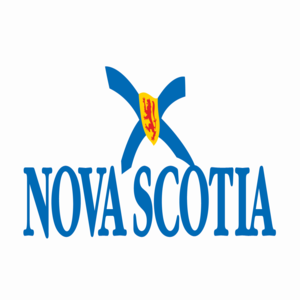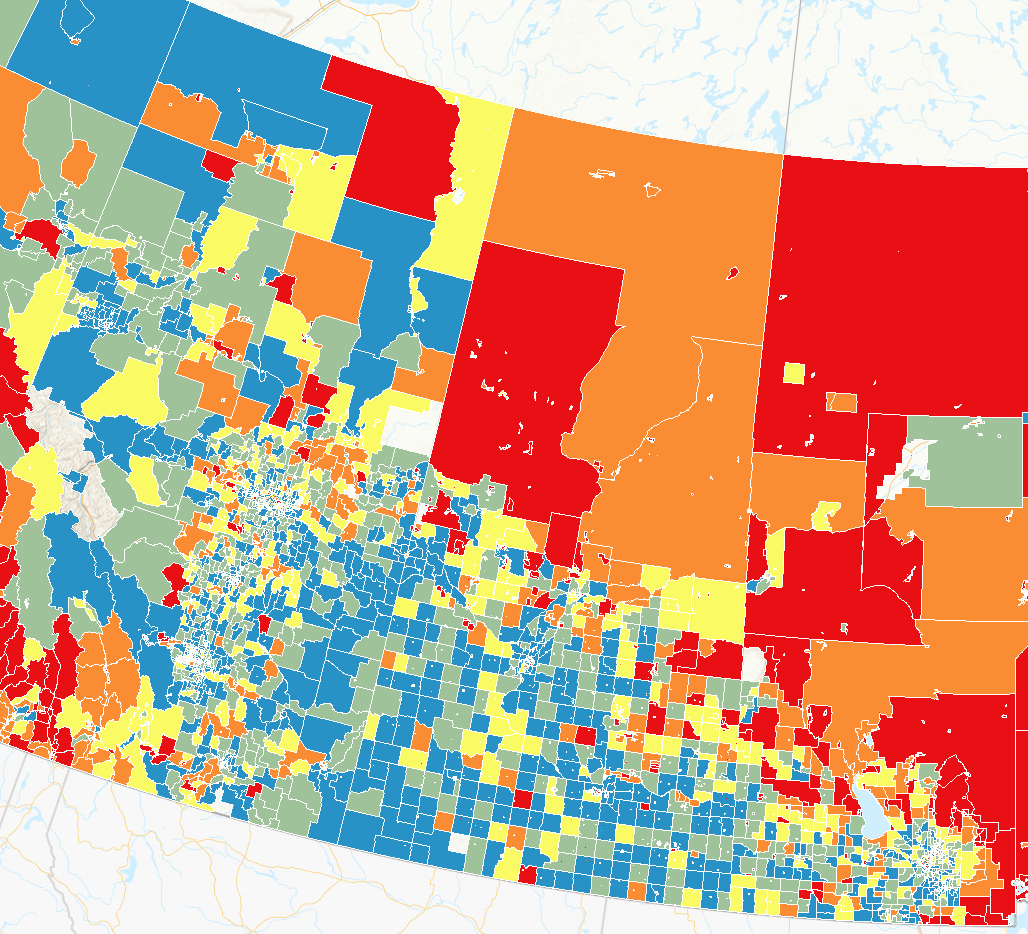statistics
Type of resources
Available actions
Topics
Keywords
Contact for the resource
Provided by
Years
Formats
Representation types
Update frequencies
status
Service types
-
Population density in Canada based on the 2006 and 2011 census data at three levels of geography: census division (CD) (1:5,000,001 and over), census sub-division (CSD) (1:5,000,000 to 1:288,897) and dissemination areas (DA) (1:288,897 and under). Population density is the number of people per square kilometer. Population density change measures the rate of change calculated by the difference in total population density values for each area between 2006 and 2011, divided by the total population density of 2006. The CD and CSD boundaries are based on 2011 data. The 2006 population figures have been adjusted accordingly. The DA boundaries are based on 2006 data. All areas with no data are indicated with a value of -999.
-
The ICES Statistical Areas delineates the divisions and subdivisions of FAO Major Fishing area 27
-
The ICES Statistical Areas delineates the divisions and subdivisions of FAO Major Fishing area 27
-

A collection of online resources where one can obtain different Labour Market Information.
-
This service shows the ratio of immigrants who arrived between 2001 and 2016 to immigrants who arrived before 2001, by census subdivision, 2016. The data is a custom extraction from the 2016 Census - 25% sample data. This data pertains to persons in private households who are immigrants by their period of immigration. 'Immigrant' includes persons who are, or who have ever been, landed immigrants or permanent residents. Such persons have been granted the right to live in Canada permanently by immigration authorities. Immigrants who have obtained Canadian citizenship by naturalization are included in this category. In the 2016 Census of Population, 'Immigrant' includes immigrants who landed in Canada on or prior to May 10, 2016. 'Period of immigration' refers to the period in which the immigrant first obtained landed immigrant or permanent resident status. For additional information refer to the 2016 Census Dictionary for 'Immigrant status' and 'Period of immigration'. For additional information refer to the 2016 Census Dictionary for 'Immigrant status' and 'Period of immigration'. To have a cartographic representation of the ecumene with this socio-economic indicator, it is recommended to add as the first layer, the “NRCan - 2016 population ecumene by census subdivision” web service, accessible in the data resources section below.
-
This service shows the percentage of the population who reported an Aboriginal identity by census division. The data is from the Census Profile, Statistics Canada Catalogue no. 98-316-X2016001. Aboriginal identity refers to whether the person identified with the Aboriginal peoples of Canada. This includes those who are First Nations (North American Indian), Métis or Inuk (Inuit) and/or those who are Registered or Treaty Indians (that is, registered under the Indian Act of Canada) and/or those who have membership in a First Nation or Indian band. Aboriginal peoples of Canada are defined in the Constitution Act, 1982, section 35 (2) as including the Indian, Inuit and Métis peoples of Canada. Users should be aware that the estimates associated with this variable are more affected than most by the incomplete enumeration of certain Indian reserves and Indian settlements in the 2016 Census of Population. For additional information refer to the 2016 Census Dictionary for 'Aboriginal identity'. To have a cartographic representation of the ecumene with this socio-economic indicator, it is recommended to add as the first layer, the “NRCan - 2016 population ecumene by census division” web service, accessible in the data resources section below.
-
This service shows the ratio of immigrants who arrived between 2001 and 2016 to immigrants who arrived before 2001, by 2016 census division. The data is a custom extraction from the 2016 Census - 25% sample data. This data pertains to persons in private households who are immigrants by their period of immigration. 'Immigrant' includes persons who are, or who have ever been, landed immigrants or permanent residents. Such persons have been granted the right to live in Canada permanently by immigration authorities. Immigrants who have obtained Canadian citizenship by naturalization are included in this category. In the 2016 Census of Population, 'Immigrant' includes immigrants who landed in Canada on or prior to May 10, 2016. 'Period of immigration' refers to the period in which the immigrant first obtained landed immigrant or permanent resident status. For additional information refer to the 2016 Census Dictionary for 'Immigrant status' and 'Period of immigration'. For additional information refer to the 2016 Census Dictionary for 'Immigrant status' and 'Period of immigration'. To have a cartographic representation of the ecumene with this socio-economic indicator, it is recommended to add as the first layer, the “NRCan - 2016 population ecumene by census division” web service, accessible in the data resources section below.
-

The Canadian Index of Multiple Deprivation (CIMD) is an area-based index which used 2016 Census of Population microdata to measure four key dimensions of deprivation at the dissemination area (DA)-level: residential instability, economic dependency, situational vulnerability and ethno-cultural composition. Using factor analysis, DA-level factor scores were calculated for each dimension. Within a dimension, ordered scores were assigned a quintile value, 1 through 5, where 1 represents the least deprived and 5 represents the most deprived. The CIMD allows for an understanding of inequalities in various measures of health and social well-being. While it is a geographically-based index of deprivation and marginalization, it can also be used as a proxy for an individual. The CIMD has the potential to be widely used by researchers on a variety of topics related to socio-economic research. Other uses for the index may include: policy planning and evaluation, or resource allocation.
-
This service shows the percentage of population aged 25 to 64 years in private households with a postsecondary certificate, diploma or degree by census subdivision, 2016. The data is from the Census Profile, Statistics Canada Catalogue no. 98-316-X2016001. This data pertains to the population aged 25 to 64 years in private households by the highest level of education that a person has successfully completed. Persons with a post-secondary certificate, diploma or degree includes those with an apprenticeship or trades certificate or diploma; a college, CEGEP or other non-university certificate or diploma; a university certificate or diploma below bachelor level or a university certificate, diploma or degree at bachelor level or above. For additional information refer to the 2016 Census Dictionary for ' Highest certificate, diploma or degree'. For additional information refer to the 2016 Census Dictionary for ' Highest certificate, diploma or degree'. To have a cartographic representation of the ecumene with this socio-economic indicator, it is recommended to add as the first layer, the “NRCan - 2016 population ecumene by census subdivision” web service, accessible in the data resources section below.
-

The Canadian Index of Multiple Deprivation (CIMD) is an area-based index which used 2021 Census of Population microdata to measure four key dimensions of deprivation at the dissemination area (DA)-level: residential instability, economic dependency, situational vulnerability and ethno-cultural composition. Using factor analysis, DA-level factor scores were calculated for each dimension. Within a dimension, ordered scores were assigned a quintile value, 1 through 5, where 1 represents the least deprived and 5 represents the most deprived. The CIMD allows for an understanding of inequalities in various measures of health and social well-being. While it is a geographically-based index of deprivation and marginalization, it can also be used as a proxy for an individual. The CIMD has the potential to be widely used by researchers on a variety of topics related to socio-economic research. Other uses for the index may include: policy planning and evaluation, or resource allocation. *** Correction October 22, 2024 *** A correction has been made to the variables in the following downloadable 2021 CIMD index datasets : Canada, Atlantic, Quebec, Ontario, Prairies, and British-Columbia. This correction impacts all the data in these datasets.
 Arctic SDI catalogue
Arctic SDI catalogue